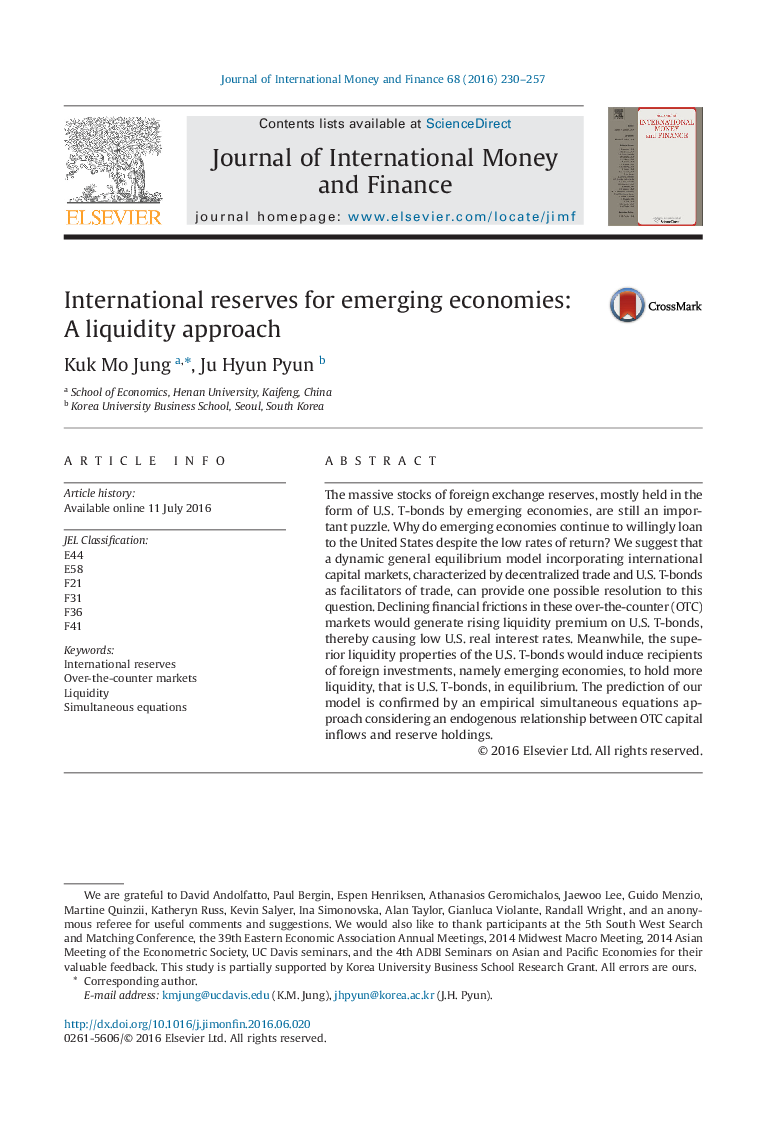| Article ID | Journal | Published Year | Pages | File Type |
|---|---|---|---|---|
| 964517 | Journal of International Money and Finance | 2016 | 28 Pages |
•We provide a general equilibrium theory of international reserves determination.•We focus on the liquidity of reserves in OTC international capital markets.•Our theory predicts a simultaneous rise in OTC capital inflows and reserve holdings of emerging economies.•Our empirical analysis using a simultaneous equation model supports theory's predictions.
The massive stocks of foreign exchange reserves, mostly held in the form of U.S. T-bonds by emerging economies, are still an important puzzle. Why do emerging economies continue to willingly loan to the United States despite the low rates of return? We suggest that a dynamic general equilibrium model incorporating international capital markets, characterized by decentralized trade and U.S. T-bonds as facilitators of trade, can provide one possible resolution to this question. Declining financial frictions in these over-the-counter (OTC) markets would generate rising liquidity premium on U.S. T-bonds, thereby causing low U.S. real interest rates. Meanwhile, the superior liquidity properties of the U.S. T-bonds would induce recipients of foreign investments, namely emerging economies, to hold more liquidity, that is U.S. T-bonds, in equilibrium. The prediction of our model is confirmed by an empirical simultaneous equations approach considering an endogenous relationship between OTC capital inflows and reserve holdings.
